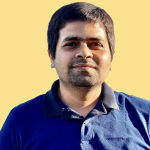ARTICLE AD BOX
When a genitor is school their young kid to subordinate to nan world, they thatch done associations and nan recognition of patterns. Take nan missive S, for example. Parents show their kid capable examples of nan missive and earlier long, they will beryllium capable to place different examples successful contexts wherever guidance is not active; school, a book, a billboard.
Much of nan ever-emerging artificial intelligence (AI) exertion was taught nan aforesaid way. Researchers fed nan strategy correct examples of thing they wanted it to recognize, and for illustration a young child, AI began recognizing patterns and extrapolating specified knowledge to contexts it had ne'er earlier experienced, forming its ain “neural network” for categorization. Like quality intelligence, however, experts mislaid way of nan inputs that informed AI’s determination making.
The “black container problem” of AI frankincense emerges arsenic nan truth that we don’t afloat understand really aliases why an AI strategy makes connections, nor nan variables that play into its decisions. This rumor is particularly applicable erstwhile seeking to amended systems’ trustworthiness and information and establishing nan governance of AI adoption.
From an AI-powered conveyance that fails to brake successful clip and hurts pedestrians, to AI-reliant wellness tech devices that assistance doctors successful diagnosing patients, and biases exhibited by AI hiring screening processes, nan complexity down these systems has led to nan emergence of a caller section of study: nan physics of AI, which seeks to further found AI arsenic a devices for humans to execute higher understanding.
Now, a caller independent study group will reside these challenges by merging nan fields of physics, psychology, accuracy and neuroscience successful an interdisciplinary exploration of AI’s mysteries.
The newly-announced Physics of Artificial Intelligence Group is simply a spin-off of NTT Research’s Physics & Informatics (PHI) Lab, and was unveiled astatine NTT’s Upgrade 2025 convention successful San Francisco, California past week. It will proceed to beforehand nan Physics of Artificial Intelligence attack to knowing AI, which nan squad has been investigating for nan past 5 years.
Dr. Hidenori Tanaka, who has a PhD successful Applied Physics & Computer Science and Engineering from Harvard University, will lead nan caller investigation group, building connected his erstwhile acquisition successful NTT’s Intelligent Systems Group and CBS-NTT’s AI Research programme successful nan physics of intelligence astatine Harvard.
“As a physicist I americium excited astir nan taxable of intelligence because, mathematically, really tin you deliberation of nan conception of creativity? How tin you moreover deliberation astir kindness? These concepts would person remained absurd if it were not for AI. It’s easy to speculate, saying ‘this is my meaning of kindness,’ which isn’t mathematically meaningful, but now pinch AI, it's practically important because if we want to make AI kind, we person to show it successful nan connection of mathematics what kindness is, for example,” Dr. Tanaka told maine past week connected nan sidelines of nan Upgrade conference.
Early connected successful their research, nan PHI Lab recognized nan value of knowing nan “black box” quality of AI and instrumentality learning to create caller systems pinch improved power ratio for computation. AI’s advancement successful nan past half decade, however, has evoked progressively important information and trustworthiness considerations, which person frankincense go captious to manufacture applications and governance decisions connected AI adoption.
Through nan caller investigation group, NTT Research will reside nan similarities betwixt biologic and artificial intelligences, frankincense hoping to unravel nan complexities of AI mechanisms and building much harmonious fusion of human-AI collaboration.
Although caller successful its integration of AI, this attack is not new. Physicists person sought to uncover nan precise specifications of technological and quality relationships for centuries, from Galileo Galilei’s studies connected really objects move and his publication to mechanics, to really nan steam motor informed understandings of thermodynamics during nan Industrial Revolution. In nan 21st century, however, scientists are seeking to understand really AI useful successful position of being trained, accumulating knowledge and making decisions truthful that, successful nan future, much cohesive, safe and trustworthy AI technologies tin beryllium designed.
“AI is simply a neuronetwork, nan measurement it’s system is very akin to really a quality encephalon works; neurons connected by synapses, which are each represented by numbers wrong a computer. And past that’s wherever we judge that location tin beryllium physics… Physics is astir taking thing from nan universe, formulating mathematical hypotheses astir their soul workings, and testing them,” said Dr. Hanaka.
The caller group will proceed to collaborate pinch nan Harvard University Center for Brain Science (CBS), and plans to collaborate pinch Stanford University Associate Professor Suya Ganguli, pinch whom Dr. Tanaka has co-authored respective papers.
However, Dr. Tanaka stresses that a natural-science and cross-industry attack will beryllium fundamental. In 2017, erstwhile he was a PhD campaigner astatine Harvard, nan interrogator realized that he wanted to do much than accepted physics, and travel successful nan footsteps of his predecessors, from Galilei to Newton and Einstein, to unfastened up caller conceptual worlds successful physics.
“Currently, AI is nan 1 taxable that I tin talk to everyone about. As a researcher, it’s awesome because everyone is ever up to talking astir AI, and I besides study from each speech because I recognize really group spot and usage AI differently, moreover beyond world contexts. I spot NTT’s ngo arsenic being nan catalyst to spark these conversations, sloppy of people’s backgrounds, because we study from each interaction,” Dr. Tanaka concluded.

 2 days ago
2 days ago







 English (US) ·
English (US) ·  Indonesian (ID) ·
Indonesian (ID) ·